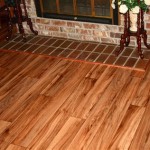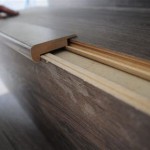Heated Tile Floor Cost Per Square Foot in the USA
Heated tile floors, also known as radiant floor heating systems, provide a comfortable and energy-efficient source of warmth, particularly during colder months. The cost of installing a heated tile floor can vary significantly depending on several factors. This article aims to provide a comprehensive overview of the costs associated with heated tile floor installation per square foot in the United States, examining contributing factors and offering a realistic understanding of potential expenses.
The national average cost for installing heated tile floors typically ranges from $8 to $25 per square foot, inclusive of both materials and labor. However, this figure represents a broad estimate. The actual cost can be substantially higher or lower depending on the specific type of heating system, the type of tile used, the complexity of the installation, and the prevailing labor rates in the region.
One of the primary cost drivers is the type of heating system employed. Electric systems, which use heating cables or mats embedded in the mortar beneath the tile, are generally less expensive to install than hydronic systems, which circulate hot water through pipes installed under the floor. However, hydronic systems, while requiring a higher initial investment, often offer greater energy efficiency and lower long-term operating costs.
The type of tile selected also significantly impacts the overall cost. Natural stone tiles, such as marble or granite, are typically more expensive than ceramic or porcelain tiles. Additionally, larger tiles may increase installation costs due to the increased handling and potential for breakage. The complexity of the tile pattern or design will also influence labor costs.
The size and layout of the room are also important considerations. Larger rooms generally have lower per-square-foot costs due to economies of scale. However, irregularly shaped rooms or rooms with numerous obstructions may increase labor costs due to the additional cutting and fitting required.
Furthermore, the existing subfloor condition can influence the cost of installation. If the subfloor is uneven or damaged, it may need to be repaired or replaced before the heated floor system can be installed. This can add significantly to the overall project cost.
Cost Components of Heated Tile Floor Installation
To understand the final cost of heated tile floor installation, it's crucial to break down the various components that contribute to the total expenditure. These components include the cost of materials (heating system, tile, mortar, grout), labor costs (installation of the heating system, tile laying), and potential additional expenses (subfloor preparation, electrical work).
Material Costs: The cost of the heating system itself is a significant portion of the material expenses. Electric systems typically range from $5 to $12 per square foot for the heating mats or cables. Hydronic systems, with their required boiler, manifolds, and piping, can cost significantly more, often ranging from $10 to $20 per square foot for the heating components alone. The tile itself can range from $3 to upwards of $50 per square foot, depending on the material, size, and design. Mortar and grout typically add another $1 to $3 per square foot.
Labor Costs: Labor costs vary widely depending on the location and the experience of the installer. Generally, labor costs range from $3 to $10 per square foot for electric systems and $5 to $15 per square foot for hydronic systems. The installation of the tile itself can add another $3 to $8 per square foot, depending on the complexity of the installation.
Additional Expenses: Depending on the condition of the existing floor and the complexity of the project, additional expenses may include subfloor preparation ($1 to $5 per square foot), electrical work (required for connecting the heating system to the power supply, potentially $100 to $500), and demolition of existing flooring (if necessary, $1 to $3 per square foot).
Therefore, a realistic estimate of material costs for electric systems can be in the range of $9 to $16, and for hydronic systems, upwards of $14 to $25. Labor costs can add $6 to $18 depending on the system and the complexity required. And the extra expenses are truly at the whims of an unpredictable situation, where the old floor might be far worse than it appears, or electrical codes might demand an upgrade.
Electric vs. Hydronic Systems: A Cost Comparison
The choice between electric and hydronic heating systems is a critical factor influencing the overall cost of heated tile floors. Each system has its advantages and disadvantages regarding installation costs, operating costs, and performance.
Electric Systems: Electric systems are generally easier and less expensive to install than hydronic systems. They consist of heating cables or mats that are embedded in the thin-set mortar beneath the tile. Installation is relatively straightforward, requiring only a connection to the electrical system. However, electric systems tend to have higher operating costs due to the higher cost of electricity compared to natural gas or other fuels used to heat water for hydronic systems. Electric systems are best suited for smaller areas, such as bathrooms or kitchens, where the energy consumption is relatively low.
Hydronic Systems: Hydronic systems circulate heated water through pipes installed under the floor. They require a boiler or water heater to heat the water, as well as a manifold system to distribute the water to the various zones. Installation of hydronic systems is more complex and requires specialized expertise. However, hydronic systems are generally more energy-efficient and have lower long-term operating costs, especially in larger areas. They are also more suitable for whole-house heating.
The initial cost of an electric system for a 100-square-foot bathroom might be in the range of $1,400 to $2,200 for materials and labor. The initial cost of a hydronic system for the same area might be in the range of $2,000 to $3,500. While the hydronic system has a higher initial cost, the lower operating costs may offset this difference over time, particularly in areas with high electricity rates.
The type of flooring to be used plays an additional role. Electric systems tend to work better for smaller areas, due to issues with efficient heating across large spaces. Hydronic systems can be zoned more effectively.
Regional Variations in Cost
The cost of heated tile floor installation can vary significantly across different regions of the United States. Labor costs, material availability, and local building codes all influence the final price. Areas with a higher cost of living, such as major metropolitan areas, generally have higher labor rates than rural areas. Similarly, areas with stricter building codes may require more expensive materials or more complex installation procedures.
For example, the cost of installing heated tile floors in California or New York City is likely to be higher than in states like Texas or Oklahoma due to higher labor rates and material costs. Coastal areas, particularly those prone to flooding, may also require more expensive waterproofing measures, which can add to the overall cost.
Furthermore, the availability of qualified installers can also impact the cost. Areas with a shortage of experienced installers may command higher prices due to increased demand. It is advisable to obtain multiple quotes from different contractors in your area to ensure you are getting a fair price.
In the Northeast regions of the USA, heating costs tend to be much higher than in the south, and, as a result, demand for heated tile is much higher. This could create a shortage of installers, or allow existing installers to charge higher rates. In the South, this process can be expected to be flipped. Similarly, States around the Great Lakes and in the upper mid-west will also experience high heating bills.
The local climate also plays a role with demand. In states like Florida or Hawaii, where floor heating isn't required, this could shift the prices of labor downwards, as they are not quite as in-demand.
The material supply chain in a given location will also play a role. States with a smaller construction industry will tend to have less developed supply chains, which can shift material prices upwards as a result.
In summary, the cost of heated tile floor installation per square foot in the USA is influenced by various factors, including the type of heating system, the type of tile used, the complexity of the installation, regional variations in labor rates and material costs, and the condition of the existing subfloor. By carefully considering these factors and obtaining multiple quotes from qualified contractors, homeowners can make informed decisions and ensure they are getting the best value for their investment.

How Much Does A Heated Bathroom Floor Cost 2025

Heated Floors In Bathroom Tips And Costs Warmlyyours

Tile Flooring Installation Cost Floor S Fixr

How Much Does Radiant Floor Heating Cost 2025

The Real Cost Of Heated Floors Are They Worth It

Costs Benefits Of In Floor Heating Ahs

Radiant Heat In Your Home Is It Worth

How Much Does A Heated Floor Cost To Install 2025 Data

How Much Does Tile Floor Cost 2025 Today S Homeowner

How Much Does Tile Installation Cost 2025 Guide
Related Posts








